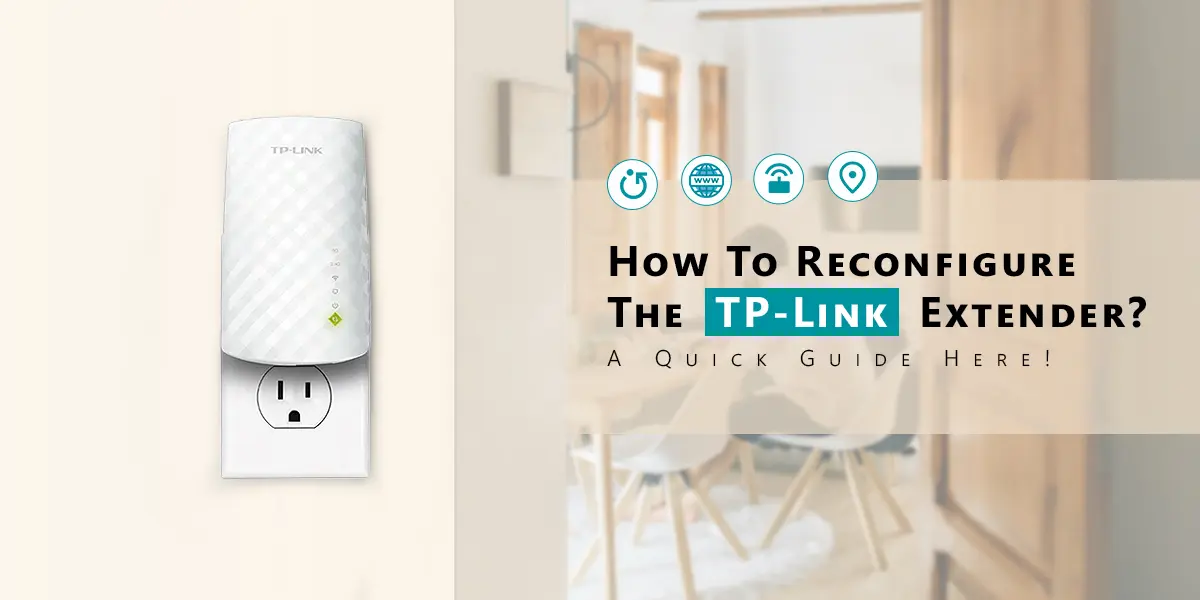
How To Reconfigure The TP-Link Extender? A Quick Guide Here!
In the modern digital age, seamless internet use requires a strong and steady Wi-Fi connection. You may need to modify your TP-Link extender in order to maximize network performance if you’ve recently upgraded your router or moved it to a new place. Fortunately, changing the configuration of a TP-Link extension just takes a few simple steps. We’ll walk you through the process of Reconfigure The TP-Link Extender in this blog so that you can get the most out of your network.
Why Should Your TP-Link Extender Be Reconfigured?
It helps to know why you might need to change your extender before you start the Reconfigure the TP-Link Extender procedure. Typical situations include the following:
- Router Upgrade: Your extender must establish a connection to the network of the new router if you have updated to a new model.
- Relocation: Your extender might need to have its settings changed to connect to the nearest network if you’ve moved it to a new spot in your house.
- Network Changes: You will need to update the extender’s settings if you make any changes to your home network, like changing the password or SSID.
Get Ready: Things You'll Need
Prior to beginning, assemble the necessary supplies:
- Your extender from TP-Link
- A tablet, smartphone, or PC
- the network name and keyword for your router
- a dependable internet connection
Steps For Reconfigure The TP-Link Extender
Reset the Extender
You might need to do a factory reset first if you’re reconfigure the TP-Link Extender because of a network change or because it’s not working properly. By doing this, the extender’s default configuration will be restored and all current settings will be deleted.
Find the Reset Knob: The reset knob is typically a tiny pinhole on TP-Link extenders.
Press & Hold: Press and hold the reset knob
Reboot: Let go of the button and bide your time for the extender to restart. When the reset is finished, the LED lights will flash before stabilizing.
Join the Network of the Extender
You must connect your PC, tablet, or smartphone to the extender’s default network after the reset is finished.
- Locate the SSID by default: Look for a label or sticker on the extension that displays the default password and SSID. Typically, it appears like “TP-Link_Extender_XXXX.”
- Establish a Network Connection: Navigate to the Wi-Fi settings on your device and choose the default network for the extender. If asked, enter the password.
Go to the Web Edge of the Extender
- You must log into your extender’s web interface in order to configure it.
- Launch a web browser: Open the browser.
- Put the IP address in here: Pass in the TP-Link extenders’ default IP address. Usually, tplinkrepeater.net or 192.168.0.254 are used for this. Hit the Enter key.
- Sign in: A log-in prompt will appear.Both the password and the username by default are usually “admin.” If none of this work, find out the correct credentials from the TP-Link website or the documentation for the extender.
Launch the Fast Setup
A simple TP -Link extender setup wizard that walks you through the reconfiguration procedure is included with TP-Link extenders.
- Launch the Wizard: After logging in, go to the online interface’s Quick Setup or Setup Wizard area.
- Choose Your Area: Select your region or nation using the dropdown menu. This aids in the extender’s wireless channel selection process.
- Select a WiFi network: discover which network is obtainable. Pick your primary router’s network from menu.This aids in the extender’s wireless channel selection process.
- Put in your WiFi password here: To enable the extender to connect, provide the network password for your primary router.
Set Up the Extended Network Preferences
This allows you to set up your extended network’s configuration.
- Select an SSID: You can either make a new SSID or use the one that is currently assigned to the expanded network. While some users choose to use a unique SSID to distinguish between the networks, others prefer to utilize the same SSID as their primary network for seamless traveling.
- Decide on a password: Make sure you create a strong password for the expanded network if you’ve selected a new SSID.
- Save Preferences: Once you’ve reviewed your selections, click “Save” or “Apply” to save the adjustments. For the modernized configuration to take upshot, the extender will reboot.
Verify Your Link
It is crucial to test the connection when the extender reboots to make sure everything is operating as it should.
- Examine the LED Indicators: A stable connection should be shown by the extender’s LED lights. For information on particular LED patterns that signify a successful setup, consult the user handbook.
- Check for connectivity: Test the internet connection and attach a device to the expanded network. Make sure your internet speed is up to par and that you have a strong signal.
Make the Best Placement
Position your TP-Link extension midway between your router and the location you require improved coverage for best results. Steer clear of other electronic devices’ interference and impediments.
Troubleshooting Hints
Try the following if you run across problems while Reconfigure The TP-Link Extender:
- Power Cycle: To reestablish the connection, restart your router and extender.
- Verify Compatibility: Make sure the frequency bands and Wi-Fi standards of your router are compatible with your extension.
- Update Firmware: To see if your extender has a firmware update available, go to the TP-Link website.
Final Thoughts
Your Wi-Fi experience can be significantly improved by easily Adjust TP-Link Extender Signal Strength. Through the extender’s settings you may optimize coverage minimize interference and enhance network efficiency by adjusting the transmit power. For optimal outcomes don’t forget to think about where to put your extender and solve any problems that may come up. You’ll be well on your way to having a stronger and more dependable Wi-Fi connection across your room with these easy fixes.